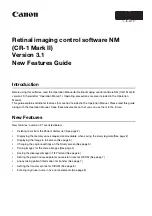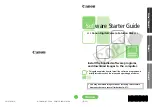
ExtremeWare XOS 11.5 supports only the Summit X450 family of switches and the BlackDiamond 8800 series switch.
ExtremeWare XOS 11.5 Command Reference Guide
1111
19
EAPS Commands
This chapter describes commands for configuring and monitoring Ethernet Automatic Protection
Switching (EAPS).
The EAPS protocol provides fast protection switching to layer 2 switches interconnected in an Ethernet
ring topology, such as a metropolitan area network (MAN) or large campuses. EAPS protection
switching is similar to what can be achieved with the Spanning Tree Protocol (STP), but offers the
advantage of converging in less than a second when a link in the ring breaks.
EAPS operates by declaring an EAPS domain on a single ring. Any VLAN that warrants fault protection
is configured on all ring ports in the ring, and is then assigned to an EAPS domain. On that ring
domain, one switch, or node, is designated the
master
node, while all other nodes are designated as
transit
nodes.
One port of the master node is designated the master node’s
primary
port (P) to the ring; another port is
designated as the master node’s
secondary
port (S) to the ring. In normal operation, the master node
blocks the secondary port for all non-control traffic belonging to this EAPS domain. If the master node
detects a break in the ring, it unblocks its secondary port and allows data traffic to be transmitted and
received through it.
EAPS fault detection on a ring is based on a single
control
VLAN per EAPS domain. This EAPS domain
provides protection to one or more data-carrying VLANs called
protected
VLANs. The control VLAN is
used only to send and receive EAPS messages; the protected VLANs carry the actual data traffic. As
long as the ring is complete, the EAPS master node blocks the protected VLANs from accessing its
secondary port.
A master node detects a ring fault in any of three ways:
●
“Link down” message sent by a transit node on the control VLAN
●
Ring port down event from lower hardware layers
●
Failed response to a periodic health-check packet on the control VLAN
When the master node detects a failure, it declares a “failed” state and opens its logically blocked
secondary port on all the protected VLANs. The master node also flushes its forwarding database (FDB)
and sends a message on the control VLAN to all of its associated transit nodes to flush their forwarding
databases.
To take advantage of the Spatial Reuse technology and broaden the use of the ring’s bandwidth, EAPS
supports multiple EAPS domains running on the ring at the same time.
















































